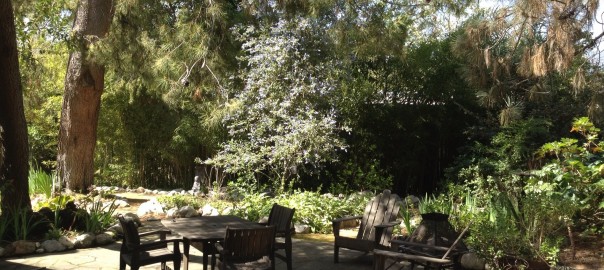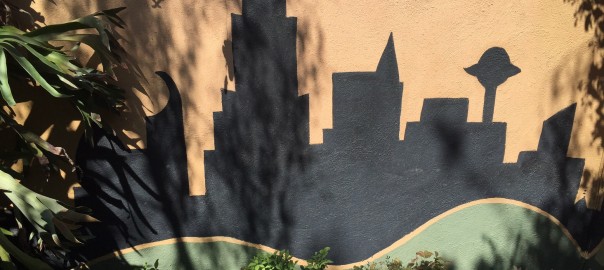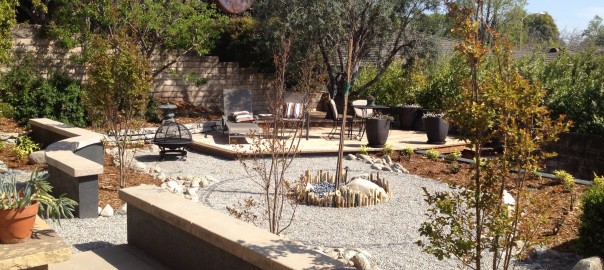April 8, 2015
Think of this drought as an opportunity to redecorate your yard into a garden. Where to start…. well, in this post I want to encourgae you to strategically plant trees in your “yard” transforming it into areas to be admired, enjoyed, and that provide a sustainable addition to your property. With the drought it is not the time to plant a garden of shrubs. Yes, they may be native and/or drought tolerant, but they must be established before they can survive with little or no water.
Typically, when we design a garden with trees, we plan short lived plants under new trees since with the canopy growth, the amount of sun will be reduced. This is just common sense, remember gardening is a process. This Great Drought offers a perfect opportunity to plant those trees, using a fraction of the water required to maintain your lawn. By the way, the County of Los Angeles has sanctioned watering of our trees, because they are a real asset. There is no irrigation required for trees, although during the drought young and old specimens need to be deep watered. (just use the water hose and let water drip out for 8 hours or so, once a month) Let’s use this drought to change the nature of Los Angeles from millions of lawns to millions of trees! The greatest Urban Forest in the country.
Here’s why. Trees have amazing sustainable benefits! Each variety has specialized growth attributes, these different aspects can be used to solve issues in your garden. Did you know a home with mature trees has more real estate value than a home without? Neighbohoods with trees have a lower crime rate…. isn’t that interesting. Trees also improve our air quality by absorbing dust and carbon dioxide, replacing it with oxygen. OK, I’m sold already. But……
….Let’s talk about harnessing the visual aspects of trees to define your property. A list will work best….
- Thoughtfully placed trees will frame your home, creating punctuated architecture.
- Trees surounding a house will reduce the need for airconditioning by 30% in the summer; the opposite in the winter.
- Trees retain massive amounts of water, so they help prevent runoff during heavy rains and help replenish ground water.
- Evergreen trees could block cold winter winds from the NorthWest in the Winter which will help keep your home warmer and use less electricity.
- Trees absorb and reduce noise pollution.
- Fruit trees provide food for you and wildlife.
- Trees can add sculpture to your garden simply by the way they grow naturally.
- Trees provide seasonal change from flowers to Fall color.
- Trees create their own mulch, let the leaves fall and be natural
- Trees can be used to create depth. Planting larger leafed trees closer to the street, smaller leafed trees closer to the house for the illusion of a larger propery.
- Trees have a calming effect. Think about that next time you are in an area with trees…. how does it make you feel. Let that feeling inspire you.
There is a difference in Hard Wood Trees and Soft Wood Trees. Hardwood tend to live longer and grow more slowly. Plant hardwoods away from the foundation of your home, give them plenty of room to grow. Know your trees, plant them knowing how large they will become and what you can look forward to seeing seasonally.
Goodness, I could go on and on about my love of trees and the oppotunity we have to transform Southern California from a sea of lawns to an Urban Forest, but I will end it here. Think of the name “forest” …for rest.
Stephen Swafford, landscape architect
IndahBulan



